Hello!
Today I wanted to create a list for people who only have room for container gardening or just don’t want to deal with an actual garden. I researched the best plants for container gardening. I have some from a few categories, annual/biennials, bulbs/corms/tubers, climbers/wall shrubs, conifers, perennials and shrubs.
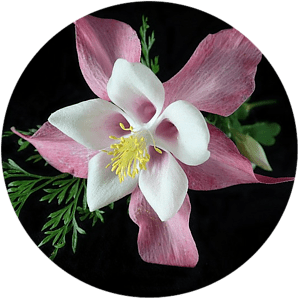 I also want to define the difference between annual, biennial and perennial plants. These basically are categories of the plants life cycle. So depending on how long you want the plant, will depend on which type you will get.
I also want to define the difference between annual, biennial and perennial plants. These basically are categories of the plants life cycle. So depending on how long you want the plant, will depend on which type you will get.
Annual – from seed to bloom, life cycle for 1 season
Biennial – from seed to bloom the life cycle is for 2 seasons. Biennial plant begins with seeds that produce the root structure, stems, and leaves along with food storage during the first growing season. A short stem and low basal rosette of leaves form and remains through the winter months for the next growing season.
Perennial – are plants that live 3 years or longer. Each season the foliage dies off for the winter and each spring produces new growth from the existing root system.
Best Plants for Container Gardening
Annual/Biennials
Begonias – these are typically used for a houseplant as they don’t’t like the cold. If you plant them outside where frost would damage them, they would just be an annual. Grow them in a container, you can put outside during the warm days and months then bring them in before the frost threat to become a houseplant. Grow in shade areas, protect them from direct sunlight. Begonias are perennials grown mostly in zone 9 thru 11. 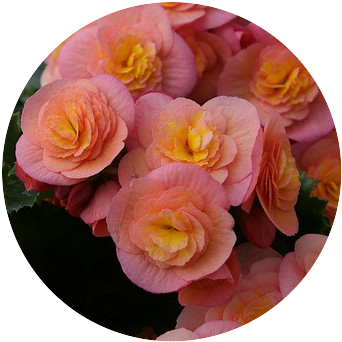
Canterbury Bells – is a biennial, during the first year the flowers grow a dinner plate size rosette of leaves and hard to tell between a common weed or Canterbury bell flowers. In the spring of it’s second year, the rosette begins to elongate and masses of bell-shaped flowers are produced in an open panicle. Plants usually branch from the base of the rosette with the central stem reaching 3 feet high while surrounded with side branches only 1-2 feet tall.
Cosmos – are an annual with a daisy like flower with a rainbow of colors. Cosmos are easy to grow from seed and would be a good plant for containers. In the hot climates, Cosmos can be in the shade and need protection from heavy winds. 
Diascia – this can be either an annual or perennial depending on where you live. This plant likes the sun for maximum blooming and is easy to grow. This plant will bloom from June to about October. Very cold sensitive and will not tolerate freezing. Plant in a container and bring inside when you know it’s going to be cold, this is a very colorful flower.
Fuchsia’s – This plant has a winter hardy and half-hardy version of the plant. The winter hardy plant is for zone 6 thru 9 or treat as an annual. Of course the half-hardy plant is an annual unless you put it in a container and bring it in. This plant also is nice in a hanging planter. Blooms in the summer.
Impatiens – Come in a variety of colors, considered an annual unless grown in Zone 10 and 11, then it’s a perennial. When planting in a container, use a good draining soil and if you are planting other annuals or perennials with Impatiens, find plants that have the same light and water requirements.
Osteospermum – this is another daisy like flower that is a perennial if grown in zones 9 on up. This plant can’t take below 23 degrees. This would be a good container plant that can be brought in on cold days and nights. This plant likes the sun and needs wind protection. Remove wilted flowers to promote more blooms.
Pelargoniyms – another name for Geraniums, and are a great candidate for container gardening. Geraniums can be grown indoors as long as you can provide lots of sunlight to moderate light for flowering. Indoor geraniums need temperatures of 65 to 70 degrees. This plant is an annual in the colder climates if left outside. 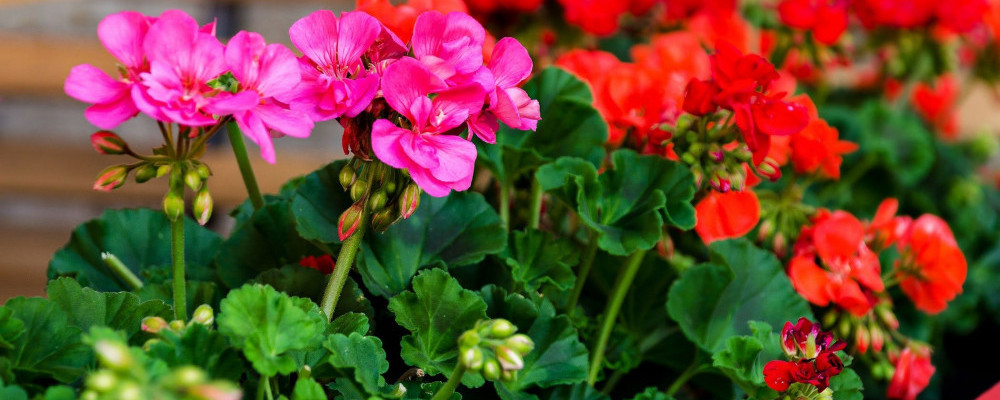
Petunia’s – Bloom all summer long and are great for container gardening. There are 4 types of petunias
- Grandiflora – most common and may spill over in containers
- Multiflora – smaller flowers and more abundant blooms
- Milliflora – these are the mini versions and reblooming
- Spreading – these are a flowering ground cover
I would say the Grandiflora, Multiflora and Milliflora would be best for container gardening
Zinnia’s – Are an annual in any zone with beautiful colors. Direct sow seeds into a container or into the flower garden. They are known to be able to withstand heat and drought like conditions. These would be beautiful in a container. 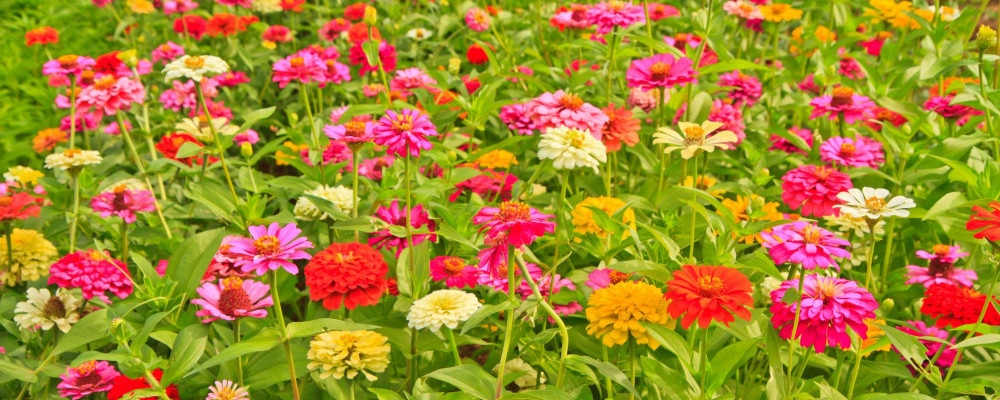
Bulbs, Corms and Tubers
Planting Bulbs in containers or in the ground by hardiness zone.
- Hardiness Zone 3 thru 5 – Plant in September
- Hardiness Zone 6 thru 7 – Plant in October
- Hardiness Zone 8 thru 9 – Plant in December
Alstroemerias – is a tuber and hardiness zone 7 thru 10. This flower resembles the lily and would be beautiful in a container garden. Like morning sun and some afternoon shade. It’s advised to soak the tubers for 24 hours first to promote germination.
Cannas – is a bulb and hardiness zone 8 thru 11. This is a lily flower, that needs full sun. This is a tropical type plant and the soil temperatures of 60 degrees and higher. Having this plant in a container can be brought indoors or in a greenhouse when temperatures get cold.
Crocuses – is a corm and hardiness zone 3 thru 8. Another pretty spring bloomer. When planting in a container plant with the tips sticking up a little out of the soil. These would be a good candidate for window planters, and other containers. Plant these corms in containers in the late fall, with some extra peat in the soil mix, and place in a dark cool place for 12 to 15 weeks, for the cold period that is needed, where temperatures are between 35 and 40 degrees. In the spring once you see sprouts, put in a sunny spot. 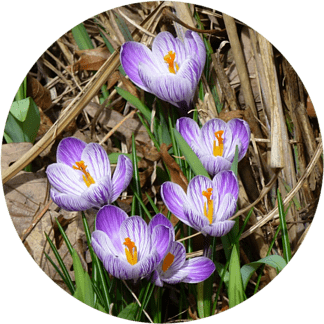
Daffodils – is a bulb and hardiness zone 3 thru 8. These would need to be planted like the crocuses, planting them in the fall and putting them in their cold space until spring. The benefit of planting bulbs in containers, you know where they are and can decorate your porch, balcony or steps.
Freesia – this is a bulb and hardiness zone 9 on up. This plant is a native of South Africa and a perfect plant for containers. If you live in zone 9 or higher, plant bulbs in autumn. Zone 8 and lower can also plant in the fall and find a place for around 40 degrees, not any colder for the plant to grow in the spring.
Hyacinth – this is a bulb and hardiness zone 4 thru 9. This flower is very fragrant and come in several colors. This plant blooms in the early spring. Plant these bulbs in containers in the fall and treat like the crocus’ and daffodils.
Iris – this can be a bulb or rhizome and hardiness zone 3 thru 10. There are several varieties that can be planted in a container. Just like the other bulbs they need to be in a cold environment under 60 degrees for approximately 12 weeks. Iris’ do best in partial to full afternoon sun and protect from wind and heavy rain. 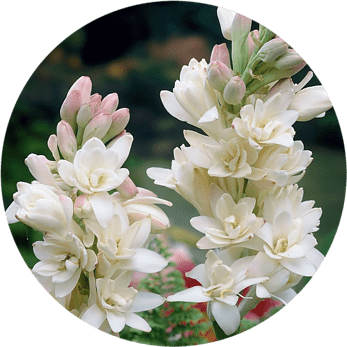
Polianthes Tuberosa – this is a tuber and hardiness zone 9 on up. This is a good plant for containers for the people who live in zones in colder zones as this plant does not like cold or frost. I planted this in 2 containers to put in my Moon garden. It’s recommended for hardiness zones 3 thru 5 start indoors 5 to 6 weeks before the frost date. Once the tubers have been planted in the container, water really good then place in a sunny spot. This plant can go outside once the temperatures during the day and night are 60 degrees on up. I plan on bringing this plant indoors before frost.
Ranunculus – Is a corm and hardiness zone 8 thru 11, below zone 8 grow as an annual or pull the corms before frost to replant in early spring. This flower is also known as Buttercups. This flower likes cool temperatures and grow best when daytime temperatures are in the mid to high 50’s. This plant takes 12 to 16 weeks from planting to blooming. I have also started these corms in containers. When dealing with corms, they need to be soaked in water for 6 to no more than 24 hours for them to work. After planting them in the container with soil, place in a dark spot for about 2 weeks until you see sprouts then bring to a sunny location 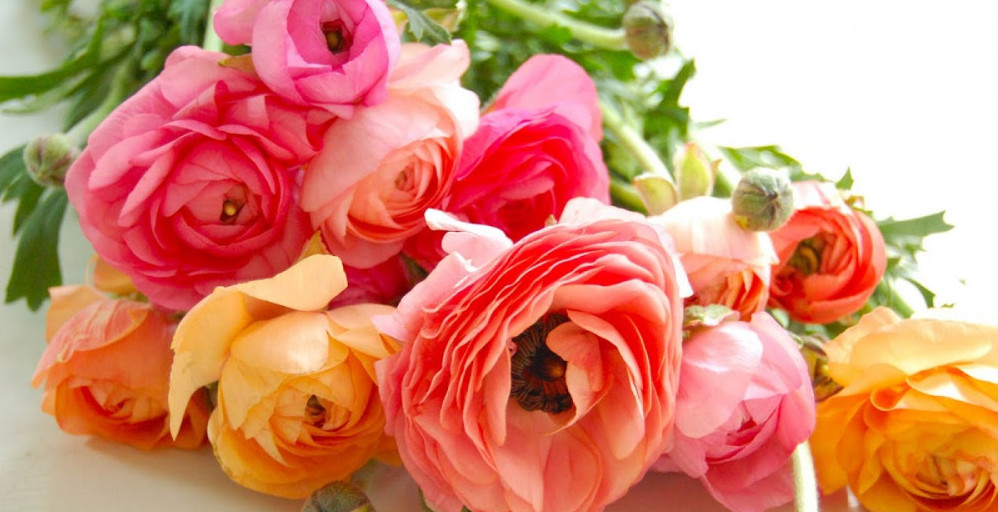
Tulips – is a bulb and hardiness zone 3 thru 10. When planting tulips in containers, it is recommended to add stone or gravel of the bottom about an inch or two then soil over top. Plant them in containers 3 months prior to you wanting them to bloom. Like the other bulbs, they also need a cool period to bloom. Occasionally water them to not dry out. Once you start to see them sprout get them in the sun and watch them grow and blossom.
Climbers and Wall Shrubs
Clematis – There are many varieties of clematis, there is even some hardy enough for zone 3 and 4, check the zone before purchasing. If growing in a container, they like a large pot to grow in, especially in colder climates. Once the clematis is planted, make sure there is a trellis or something for it to climb. These have beautiful flowers and may need weekly feedings to continue to bloom for the season. Use a general purpose, slow release fertilizer and check the container daily, especially on hot days. The pots dry out much faster and may need daily watering. 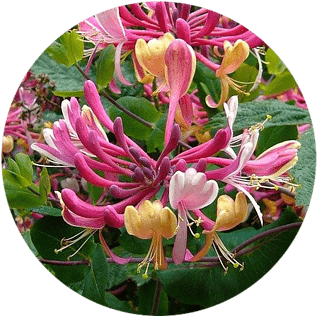
Honeysuckle – The honeysuckle is a climber like the clematis and also needs a large pot, about 30 inches deep and 20 in diameter on the top. Placing the container near a fence or wall trellis is suitable for the plant to climb on. Pruning are best during the winter time during dormancy to promote new growth in the spring. When selecting a honeysuckle for a container, see if there is a dwarf or small variety.
Ipomeoa – Also known as Morning Glories and Moonflowers. I think these flowers are so beautiful. I plan on starting some moonflowers in pots to get them started then plant them outside on a Moon shaped trellis for my Moon Garden. There will be a future post about that once I get started. If you don’t have a lot of space for these viney flowers to grow having them in a container is a good option and give them something to climb. Also unless you are in zone 10 or 11 these plants are annuals.
Jasminum – The jasminum officinale is known as the common Jasmine or simply jasmine plant. This is a very fragrant climbing bush. Make sure there is a fence or trellis for it to climb on or some kind of supports. When planting in the container make sure the crown of the plant is level with the soil. Water frequently when soil is dry. This variety can get big so maybe use a really big container. 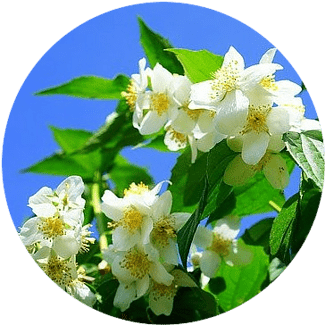
Perennials
Agapanthus – Another name is African Lily, originating from South Africa. Beautiful blue trumpet flowers. Place pots in a sunny location for maximum blooms, water regularly. There are hardy and half-hardy varieties but both would probably need to be brought indoors for the winter unless you live in zone 8 thru 11 and possibly zone 7.
Bergenia – This is great for container gardens. This plant likes the soil relatively moist and does well in shade to part shade areas. The winter hardiness zone is 4 thru 8. This plant has great foliage and beautiful blossoms. This plant is a great companion to other container plants.
Daylilies – When planting daylilies in a container, they should be in at least a gallon size container. Daylillies like the sun and need frequent watering if in a container, as the sun dries them out faster. Even though daylillies are very cold hardy they are not so much in a container. If you are in zone 7 or lower you may want to place the container in a garage or basement where it’s not as cold as outside. Then in the spring place them in a sunny spot.
Heuchera – Also known as Coral Bells, most of the varieties have hardiness zones 4 thru 9. Some varieties like shade and some like sun, so make sure you know which variety you have. Make sure they get water as in containers they dry out faster. The plant has flowers in the early summer, once the blooms are done cut back the stalk and enjoy the colorful foliage. 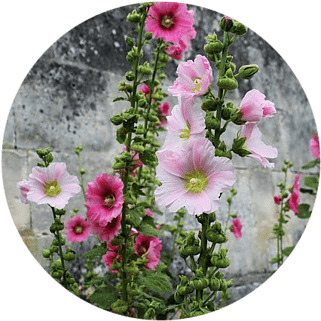
Hollyhock – truly is an old garden favorite, with a long blooming season. Usually considered a short-lived perennial in Zones 3-8, but may live for several years if stalks are cut off at their bases after the flowers fade. Put container in a sunny location and protect from the wind.
Rudbeckia – Also known as Black-Eyed Susan as this plant can be grown in containers, they need a wide mouth and deep container to grow as they have deep growing roots. I actually have this growing in a nice sized container. It’s been doing well in it for a couple years now. We will see if it comes back this year in the container. The hardiness zone for Rudbeckia is 3 thru 9. Deadhead the old flowers for possible extending the flowering season.
Salvias/Sage – Salvia and Sage is a good container plant as they can be invasive for some areas. Anything that can be invasive is a good idea to plant in a container. I have heard of people getting a really large container and burying it in the ground, to plant the invasive plant so it can’t spread. Make sure the container has good drainage and put in a sunny spot. I have a ballerina pink salvia and the hardiness zone is 3 thru 8. 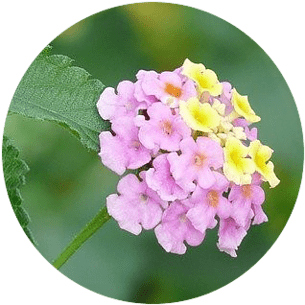
Verbena – There are many varieties of Verbena with a hardiness zone of 5 thru 11 depending on the variety you get. This plant does well in a hanging basket or container. Frequently check the container or hanging basket, as they dry out faster. This plant likes full sun and blooms most of the season.
Shrubs
Azaleas – Need a large container as most shrubs in containers need more room for their roots. Azalea’s like the morning sun and afternoon shade. Even though the hardiness zone for most azalea bushes is 5 thru 9 but if in a container they need more protection from the cold. When planted in the ground the roots are more protected. Can be brought indoors for the winter. Deadhead flowers to promote more blooms.
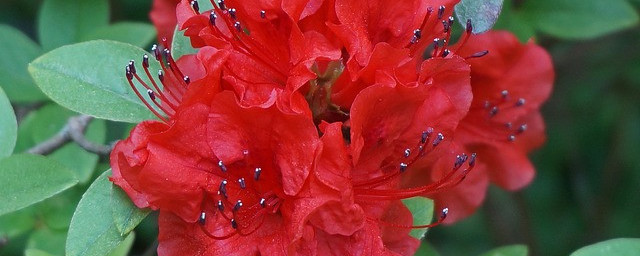
Hydrangeas – these are great for container gardening, if you don’t have room to plant in the ground. The hardiness zones are 6 thru 9 and some are zone 5. I have some planted in the ground in zone 5. Make sure to use a large pot to plant it in. These plants would look great on a balcony and porch. Morning sun is best. I find in the heat of the summer they will wilt from the sun and heat. If really hot move them to a shaded spot . If you live in a colder zone under zone 5, having them in a container allows you to bring them indoors to overwinter them. 
Lavender – is a good container flower as they can be invasive in some areas. Lavender doesn’t like to be damp, let the soil dry out but not to the point of the plant wilting. Put lavender in full sun, where it can get at least 8 hours. Lavender has a great calming scent and great for patio and balconies.
Rhododendrons – These would do good in a container like a half barrel, 15 or 20 gallon container, since this plant can get quite large. They like full sun and well-drained soil. Blooms in spring and fall. 
Roses – having roses in containers, you can move them around to spark interest in other area on the patio or balcony. Roses in container will need to watered daily in the summer. On days that are 85 degrees on up, water twice a day. Roses planted in the ground don’t need that much water, containers dry the soil faster. Roses need to be fertilized about every 2 week with a water soluble fertilizer, roses are heavy feeders and need frequent feedings. Potted Roses can be brought indoors for the winter as well for nice blooms as a houseplant.
Happy Planting!
I have listed some of the best plants for container gardening. For people who have limited space or live in a condo or apartment living with a small patio or balcony. All the plants want a well drained soil and some need very large pots, mostly in the shrub category. I have some of these plants that I have started myself.
I have started an Azalea bush, Roses, Canterbury bells, hollyhock, that will be planted in the ground and I have started
Polianthes Tuberosa and Ranunculus in containers that will stay in containers due to their hardiness zone and are sensitive to frost and very cold conditions. I plan on bringing them indoors for houseplants for the winter. I also have a few miniature roses in pots that I think will stay in pots but put out on my patio for the summer and bring back in for the winter.
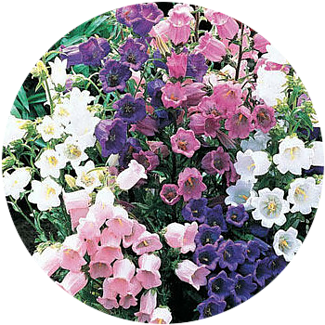 I hope you found this post helpful and inspiring to plant flowers. Flowers make people smile and happy! Plant some flowers in a container or in the ground.
I hope you found this post helpful and inspiring to plant flowers. Flowers make people smile and happy! Plant some flowers in a container or in the ground.
Please leave a comment below and tell me about your flower gardening plans! I would love to hear from you!
Cheers!
Chris

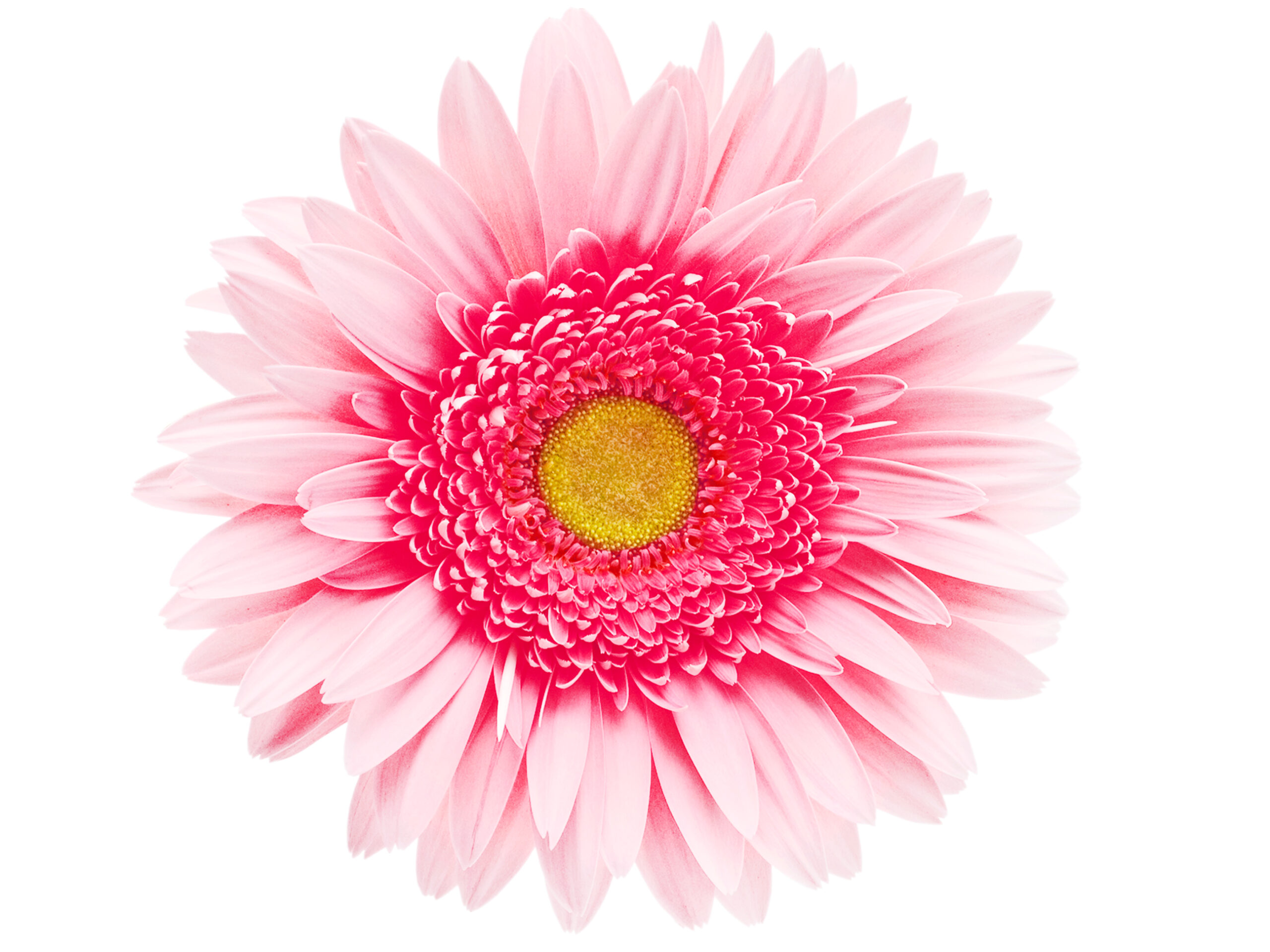

Very beautiful! I am entice to add those I have seen from your list that are growing in the Philippines. Among those I am familiar with are Cosmos, Zinnia, Daffodils, Tulips, Roses and Azalea.
I do not have a space at home which gets enough sunlight. I started planting herbs and leafy vegetables in container. But there is a point when they just die naturally. I thought at first that I don’t have the green thumb, so I repeat planting months after months.
Later, I realized it is my place so I started pulling them and brought to my mother’s garden which is just a few blocks away from home.
I love to gaze at flowering plants of neighbors. Good thing I stumbled at your post. I will start planting those that can grow in our climate. I also use containers because our area is a flood basin of our region. So if you care about cold atmosphere, we look out for flood in our area, thus planting in container is a must.
Hi Rose,
Thank you for your comments and sharing how you use containers where you live in the Philippines. I am curious to what hardiness zone you are in. Stop back for more gardening tips.
Chris
Hi Chris
Thanks for sharing your thoughts on best plants for container gardening. I have many plants but all in the containers as I live on the fifth floor of our apartment and there is no ground other than balcony. You have chosen some of the most attractive plants for container gardening. I could easily come to know the difference between annual, biennial and perennial plants and can plan accordingly. Thanks for your research.
Warm Regards,
Gaurav Gaur
Hi
Thank you for your comments. I am glad I have some ideas for your balcony.
Chris
In the field of agricultural work, sowing can be defined as the process of planting seeds so that they germinate and develop plants. Sowing will be effective if certain conditions are met: the seeds must be healthy, the climate must be suitable for cultivation, etc. But I am glad to say that following your tips, the joy of planting can be translated to our homes. Having plants in containers requires attention to some details, but it’s equally rewarding.
Hi Able,
Thank you for your comments. Yes for people who don’t have the room for a garden, container gardening is a great option. I love growing plants.
Hi Chris, perfect timing for this article. Just as I started thinking about the spring and planting my containers, I have come across your amazing article. The information in the post is very helpful and I will be able to use it when I finally get to it. I have made plenty mistakes in the past where I have planted the wrong plants in containers and they either didn’t survive or they did not turn out the way they should.
Having read you great article and all your suggestions, I have no more excuses not to get out there and start working on my containers.
Thank you for your comments! Many different ideas for container gardening, the possibilities are endless.